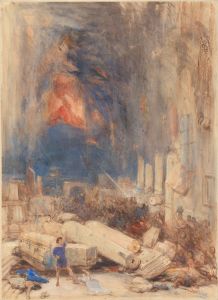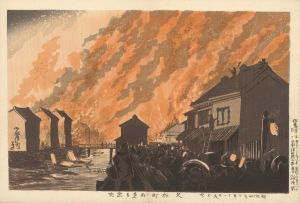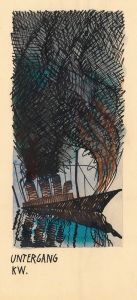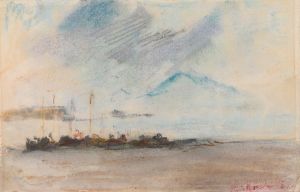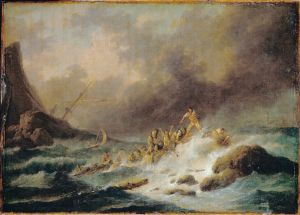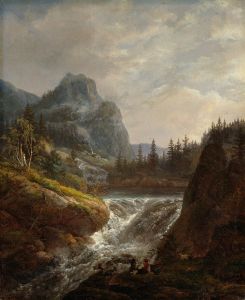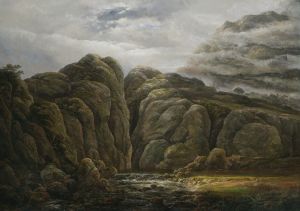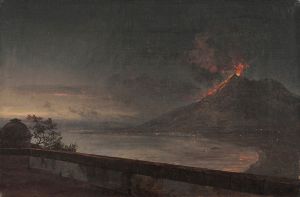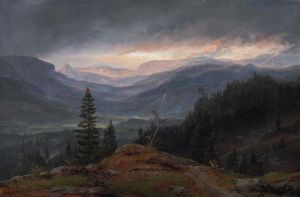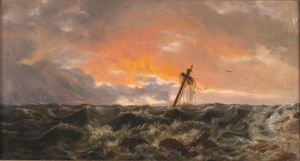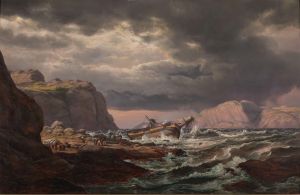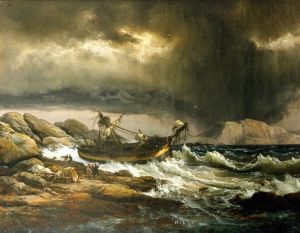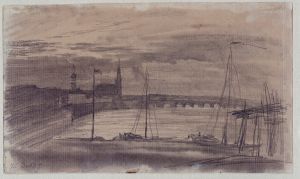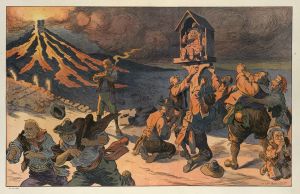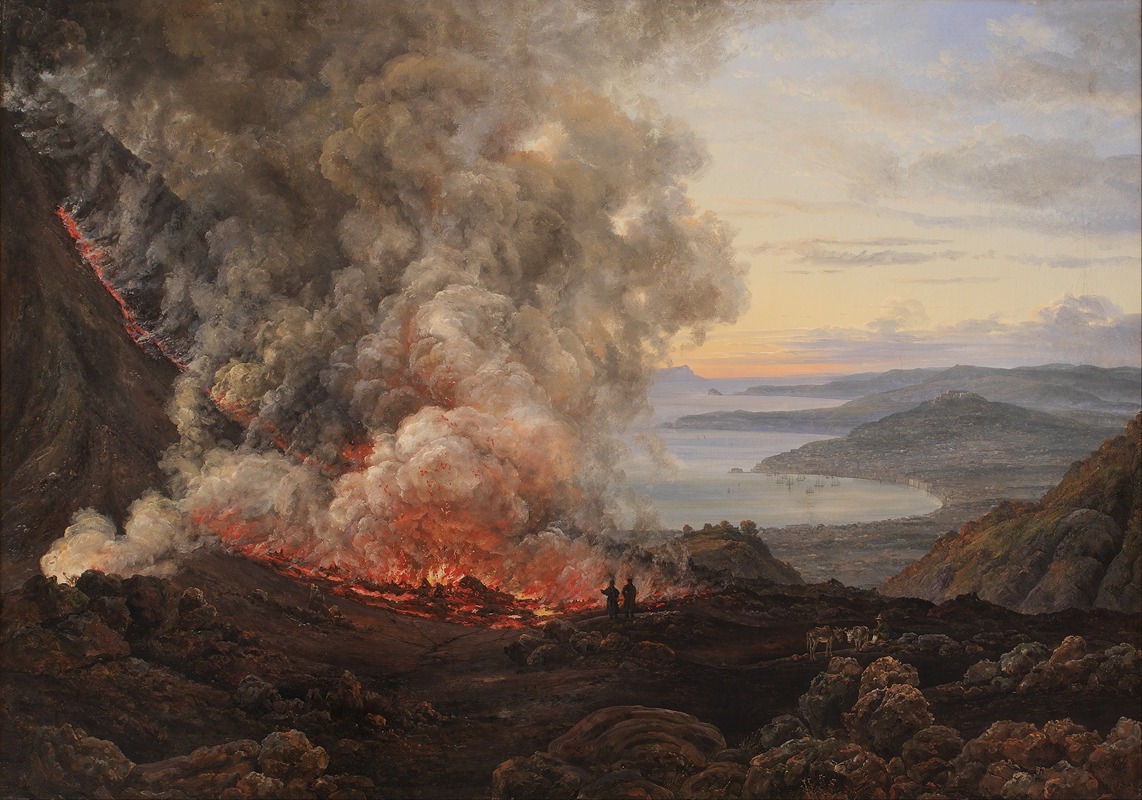
Eruption of the Volcano Vesuvius
A hand-painted replica of Johan Christian Dahl’s masterpiece Eruption of the Volcano Vesuvius, meticulously crafted by professional artists to capture the true essence of the original. Each piece is created with museum-quality canvas and rare mineral pigments, carefully painted by experienced artists with delicate brushstrokes and rich, layered colors to perfectly recreate the texture of the original artwork. Unlike machine-printed reproductions, this hand-painted version brings the painting to life, infused with the artist’s emotions and skill in every stroke. Whether for personal collection or home decoration, it instantly elevates the artistic atmosphere of any space.
The painting Eruption of the Volcano Vesuvius was created by the Norwegian artist Johan Christian Dahl in 1826. Dahl, often regarded as the father of Norwegian landscape painting and a prominent figure in the Romantic movement, was known for his dramatic and naturalistic depictions of landscapes. This particular work captures the eruption of Mount Vesuvius, a volcano located near Naples, Italy, which has been historically significant for its catastrophic eruptions, including the destruction of Pompeii in 79 AD.
Dahl painted Eruption of the Volcano Vesuvius during his travels in Italy, a period that greatly influenced his artistic development. He visited Naples in the mid-1820s, a time when Mount Vesuvius was particularly active. The painting reflects Dahl's fascination with the sublime power of nature, a theme central to Romanticism. The work vividly portrays the fiery eruption, with molten lava and smoke dominating the composition, set against a darkened sky. The dramatic contrast of light and shadow emphasizes the raw energy of the volcanic activity, evoking both awe and terror.
The painting is notable for its meticulous attention to detail and its ability to convey the dynamic forces of nature. Dahl's use of color and light effectively captures the intensity of the eruption, while the inclusion of small human figures in the foreground provides a sense of scale, highlighting the insignificance of humanity in the face of nature's immense power. This approach aligns with the Romantic ideal of the sublime, which seeks to evoke a mixture of wonder and fear.
Eruption of the Volcano Vesuvius is housed in the National Gallery of Norway (Nasjonalmuseet) in Oslo, where it remains an important example of Dahl's work and a testament to his skill as a landscape painter. The painting is also significant for its historical context, as it documents a natural phenomenon that has fascinated and terrified people for centuries.
Dahl's depiction of Vesuvius is not only a remarkable artistic achievement but also a reflection of the 19th-century Romantic interest in the power and unpredictability of the natural world. The painting continues to be appreciated for its dramatic composition, technical mastery, and its ability to convey the awe-inspiring force of nature.





